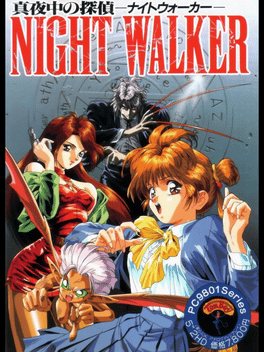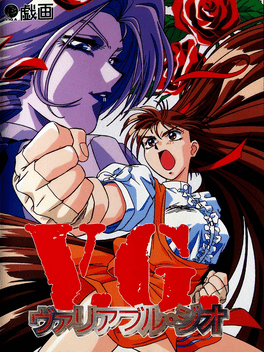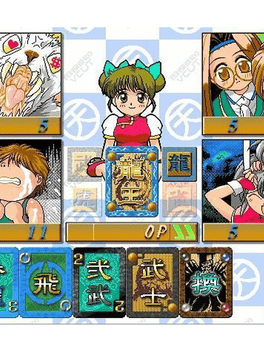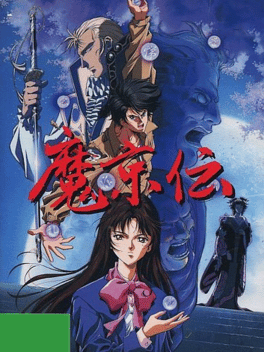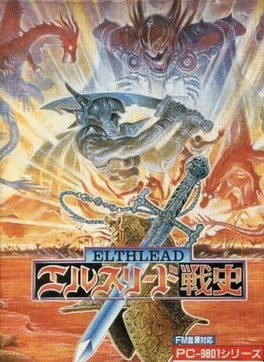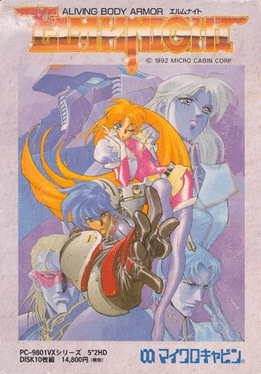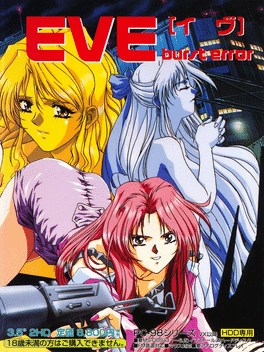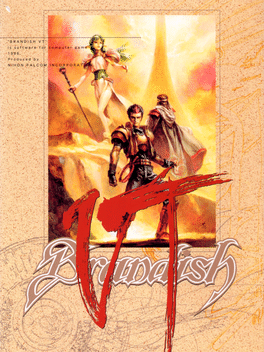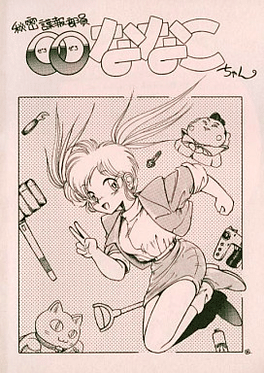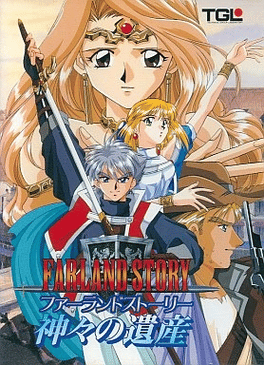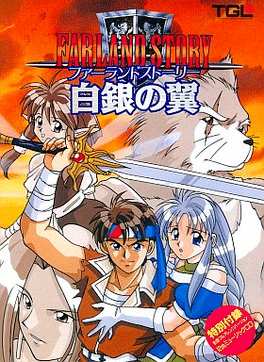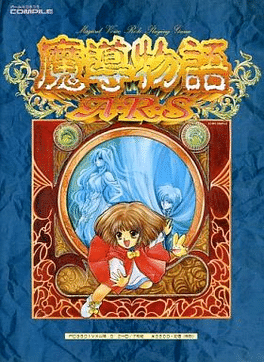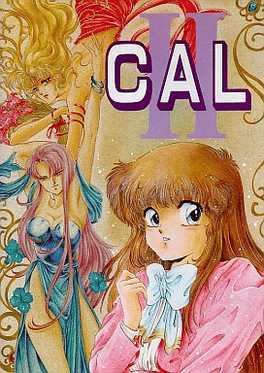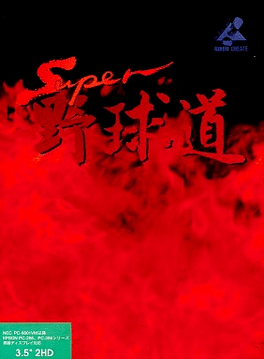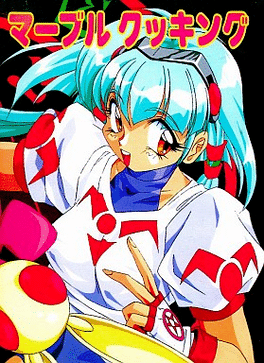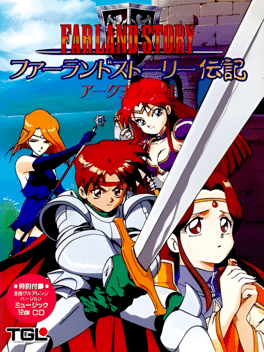Most Popular Pc 9800 Series Games - Page 12
-
Night Walker: Mayonaka no Tantei
1993
a 16-color PC-9801 eroge released by Tomboy in December 1993. Nightwalker is an adventure game, focused mostly on character interaction and problem solving. While the main characters of this game have the same names and similar appearances to their anime equivalents, their personalities are generally more easy-going and their backgrounds are less tragic (they all have living relatives). In comparison to the anime, the game is fairly lighthearted, with Shidō and Guni providing comic relief. Nightwalker was initially developed as a spin-off project of the adult game Bishōjo Audition: Find an Idol released by Tomboy in February 1993, with the character Rihoko Ayukawa from that game reappearing as a heroine. However, in the process of refining the setting, the heroine's name was changed to Riho Yamazaki, her design was changed, and the story and setting were separated from the previous work. The concept of the world of Nightwalker itself is based on illustrations from 1992. -
Arcus III
1991
-
V.G.: Variable Geo
1993
V.G.: Variable Geo
1993
Variable Geo is a Japanese 2D fighting game / eroge developed and published by TGL under their Giga brand. The game focuses on an all-female martial arts competition where participants are required to promote various family restaurants by acting as waitresses when not fighting. Takahiro Kimura was responsible for designing the characters -
VG II: The Bout of Cabalistic Goddess
1994
After the six girls of the Jahana group have concluded their Variable Geo tournament, a girl named Kotoe Kashima, who happens to be the childhood rival of Reimi Jahana, has organized a new tournament, called "Bout of Cabalistic Goddess". The tournament is once again sponsored by a chain of restaurants, with famous martial artists working there as waitresses. The player chooses one of the six girls of the Jahana group and has once again to defeat all the others in battle before fighting Kotoe and her bodyguards. The Bout of Cabalistic Goddess is the second game in the Variable Geo series. It follows the same gameplay template as its predecessor: the player has to fight the other girls in a pre-determined order, winning two rounds out of three. There are five new girls to fight in this sequel. As before, the defeated fighters undergo various humiliating treatments of sexual nature. There are now three erotic scenes per girl, but it's possible to see them only after winning the whole battle, not one scene per round, -
Makyouden
1992
-
Elthlead Senshi
1988
Elthlead Senshi
1988
Elthlead Senshi is a Strategy game, developed and published by NCS, which was released in Japan in 1988. -
Bacta
1992
Bacta
1992
Jinpachi Tanaka is a paranormal investigator who possesses the powers of detecting and fighting demonic creatures. As these demons are usually female and pretty, they can easily pose as humans, and Jinpachi must use somewhat unorthodox techniques to tell friend from foe. Jinpachi and his employees must cooperate with the police and avert grave dangers posed by an angry female demon who has sworn revenge against the hero. Bacta is a Japanese-style adventure game. The player is presented with a text menu containing verbs, most of which lead to sub-menus with objects. Some of these commands are context-specific, while others ("Look", "Talk", "Move", etc.) are present in every situation. Sometimes events must be triggered by repeatedly selecting commands. -
EVE burst error
1995
EVE burst error
1995
An adult murder mystery/detective visual novel with 2 stories taking place at the same time. The point of view can be swapped between the main characters, a private detective hired to investigate some very suspicious pieces of art and a government agent assigned to protect the daughter of a Japanese embassy official stationed abroad, at any time to help solve the cases they are working on and interacting with each other at points to progress their stories. The game was ported to Sega Saturn and that version was then ported to Windows, with changes to the games content in both instances, resulting in a 15+ rating. -
Brandish VT
1996
-
Farland Story: Kamigami no Isan
1995
The sixth in the row on Farland Story games, "Kamigami no Isen" is set in a different world than the rest: a retro-style, Western-like environment with elements of sci-fi. You control a thief named Grey, who one day gets caught "in flagrante", and is saved by a girl named Elicia. It seems that Elicia and her sister have to escape the house, persecuted by enemies. Grey decides to help the sister, and gets involved in a conspiracy he would never dream about. Despite having a totally different story and setting, this Farland Story game still looks and plays more or less exactly the same as its predecessors. You have a party which you navigate on the screen in turn-based mode, assigning commands to it (such as "Move", "Heal", etc.) Some characters have special commands (like "Sneak" for Grey). Whenever you and the enemy attack each other, a short animated attack sequence is shown. You can use various types of terrain to your advantage (different for each character type). As in previous Farland Story games, you gain ex -
Farland Story: Shirogane no Tsubasa
1994
Chronologically the fourth Farland Story game, "Shirogane no Tsubasa" makes a fresh start story-wise, bring the first Farland Story not to deal with the hero Arc and his friends. In this game, you follow the destiny of a rebel group, who had to flee from the evil despot Pepper. Led by the cat-man Darland and the fugitive Phir, the rebels must overcome all possible obstacles in order to put an end to the evil reign and to restore peace in the land. Although the game has a different story, it still looks and plays more or less the same way as the first three Farland Story games. The game consists of strategic battles, during which you navigate your party members in turn-based mode over the map, attacking enemies when they are in range, and casting spells. Various type of terrain influences your attacks. For example, if you position your character on a square with a castle, his/her HP will be healed. -
Madou Monogatari ARS
1993
Madou Monogatari ARS
1993
Madou Monogatari ARS is a prequel to Madou Monogatari 1-2-3, like Madou Monogatari 1-2-3, it is a trio of first-person dungeon crawlers. Each chapter is devoted to a different playable character. -
Cal II
1991
Cal II
1991
You are Wataru Ishibashi, a high-school student in modern Japan. Up until recently you led a normal life, enjoying the relationship with your lovely girlfriend Mika. But short before the graduation ceremony, you had a strange vision that you first believe to be a dream. But when you are contacted by Venus, the goddess of love, you realise Mika was abducted by Aeon, the goddess of time, and transferred into the Realm of Time. You must now travel to the legendary dream world of beautiful goddesses and bring Mika back. -
Super Yakyuu-dou
1992
-
Godzilla
1993
Godzilla
1993
Godzilla is a game for the NEC PC-9800 series developed by SystemSoft and released in 1993. -
Marble Cooking
1994
-
Farland Story Denki: Arc Ou no Ensei
1994
This is a sequel to the first Farland Story game, released in early 1994. The game looks very similarly to its predecessor. The entire gameplay is dedicated to strategic battles, during which you navigate your large party in turn-based mode over the world map. Once you have issued commands to all your party members, it's the enemies' turn to act. You can attack enemies when they are in range of your weapon, or cast healing and offensive area spells. Your characters level up, can use items, and equip a variety of weapons and armor pieces.
